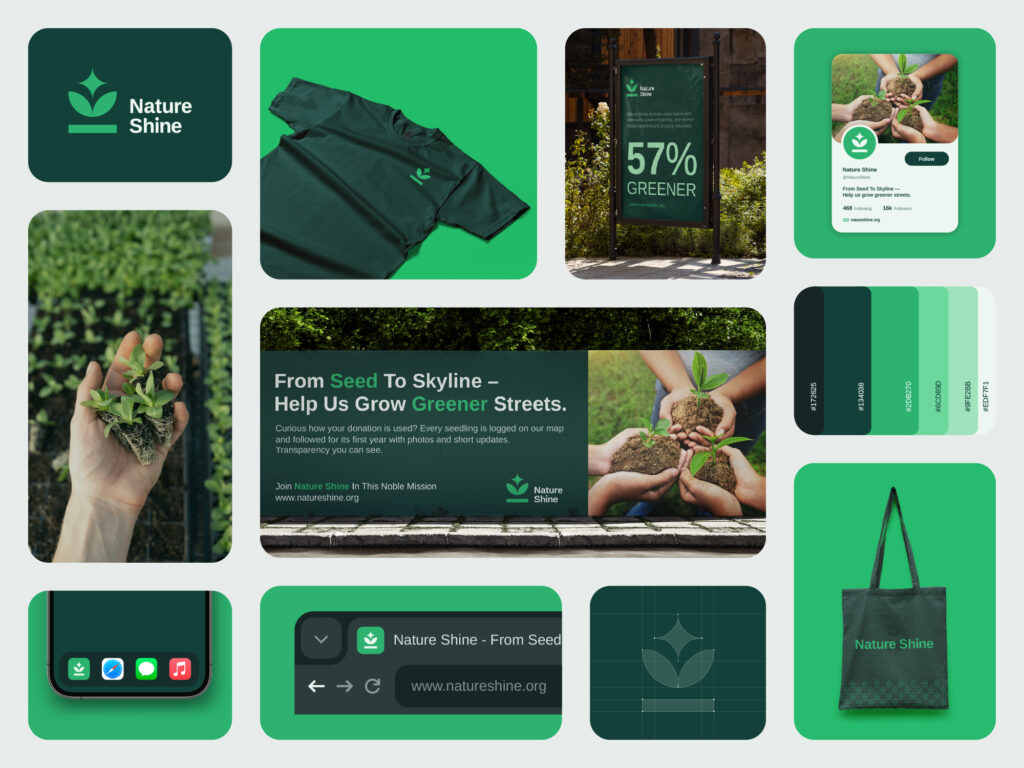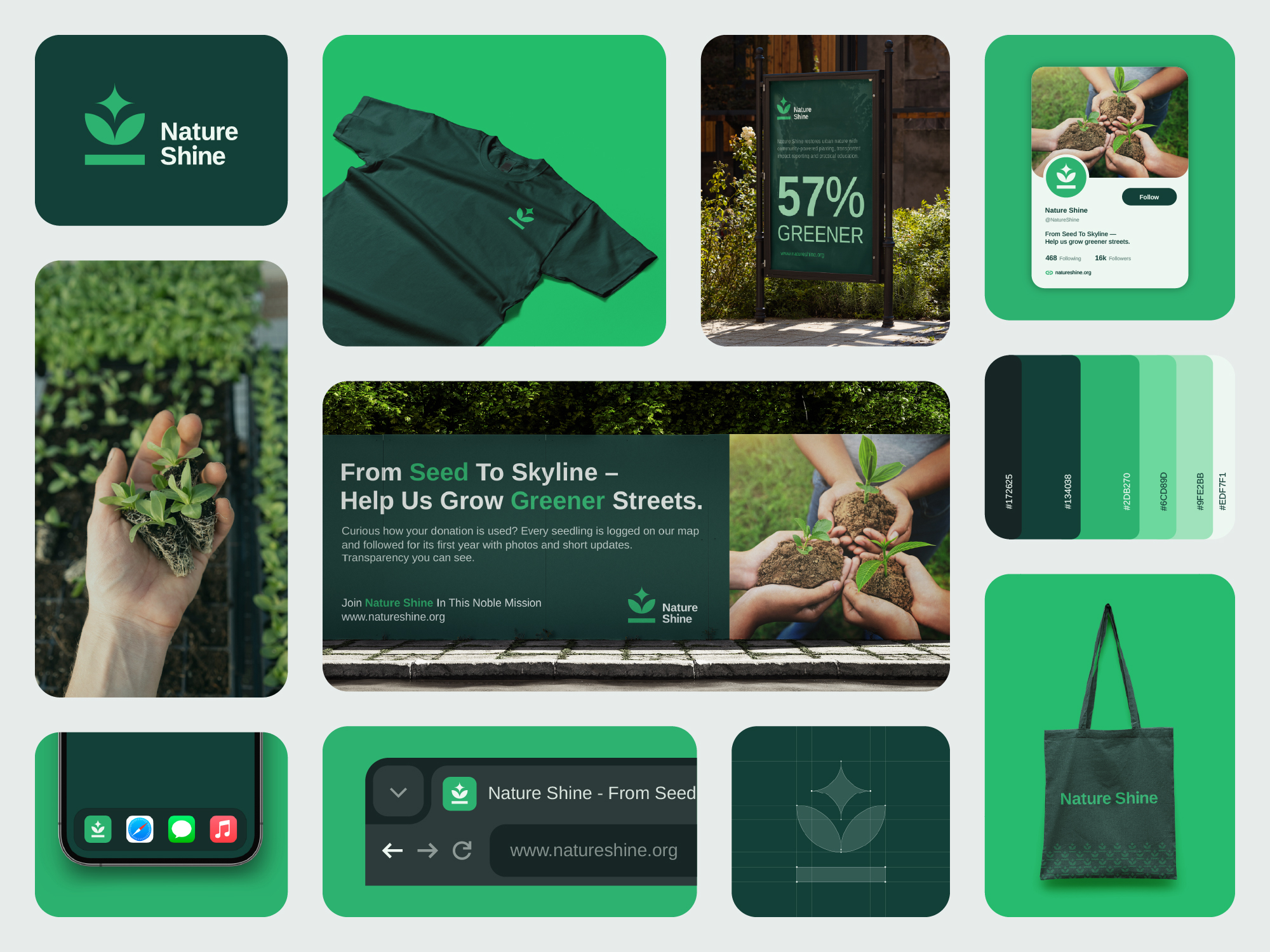Brand Identity Design
This page shows information about the Brand Identity design service.


What is Brand Identity Design?
Brand identity design or Visual Identity design or Branding refers to the process of creating a visual and conceptual representation of a brand. It involves developing a cohesive and distinct visual language, including elements such as logos, colors, typography, stationery designs, imagery, and overall design style that reflect the brand’s values, personality, and positioning in the market.
Why do you need an identity for your brand?
Brand identity design is important because it differentiates businesses from competitors in a crowded marketplace. It creates a unique and memorable visual representation that builds recognition and familiarity with customers. Consistency in brand identity design establishes trust and professionalism, while evoking emotions and fostering a deeper connection. A well-crafted brand identity design conveys credibility and professionalism, instilling confidence in customers and influencing their purchasing decisions. It ensures visual cohesion across all brand materials, reinforcing the brand’s identity and positioning in the market. Overall, brand identity design plays a vital role in building a strong and recognizable brand, connecting with the target audience, and driving business success.
Why would you invest in this?
By investing in a good brand identity system, businesses can differentiate themselves from competitors and stand out in a crowded marketplace. It helps create a memorable and recognizable brand that builds trust and loyalty with customers. A cohesive brand identity system ensures consistency across all touchpoints, including websites, social media, packaging, advertising, and more. This consistency establishes credibility and professionalism, making it easier for customers to understand and connect with the brand.
PRICING
What's the cost?
The cost depends on your requirements and how much you care about your brand. While there isn’t a set price, there are some standard pricing options available just to give an idea. However, it is suggested to get a custom quote for a project based on your requirements that fits your needs.
Basic
We want an affordable option from a professional
Standard
We want professional quality work with limited requirements
Pro
We want the best results without any limitations
LET"S WORK
Want to get a custom quote?
Discuss your requirements with me and get a custom quote based on your project.
MEANING
Used terms!
If you don’t know what those words mean, here’s a quick explanation. Click the toggle to see!
The concept means the number of different logo options that you will get to choose from. After you choose one, I’ll work on it to make it perfect.
These are fully editable files that will allow you to edit the designs in the future if you want. For example, you can use these files to change the size & color without losing any quality.
RGB and CMYK are different color modes used in design. RGB (Red, Green, Blue) is used for digital design and creates colors by combining varying intensities of red, green, and blue light. It is ideal for digital mediums like websites and social media graphics. On the other hand, CMYK (Cyan, Magenta, Yellow, Key/Black) is used for print design and works by subtracting ink from a white background to create colors. It is used in physical media such as brochures and magazines. Converting designs from RGB to CMYK is important for accurate color reproduction in print.
A brand color palette, also known as a brand color scheme or brand color scheme, refers to a predefined set of colors that represent and consistently communicate a brand’s identity and visual identity system. The brand color palette is carefully chosen to evoke specific emotions, reflect the brand’s personality, and create a recognizable and cohesive visual identity across various brand assets, such as logos, websites, packaging, and marketing materials. Having a consistent brand color palette helps establish brand recognition, enhances brand recall, and fosters a sense of trust and familiarity with the target audience. The colors selected for the palette should align with the brand’s values, target market, industry, and desired brand perception.
Brand typography refers to the specific typefaces or fonts chosen and consistently used in a brand’s visual identity system. It encompasses the selection, pairing, and application of fonts to establish a unique and cohesive typographic style that represents the brand’s personality and enhances its overall visual identity. Brand typography plays a crucial role in conveying a brand’s message, establishing hierarchy, and evoking a specific tone or mood. The chosen typefaces should align with the brand’s values, target audience, and desired brand perception.
Mockups are realistic representations of how a design will look in its intended context. They provide a visual preview of logos, websites, packaging, and more in realistic settings. Designers use mockups to showcase their work, gather feedback, and make informed decisions before final production. Mockups help visualize designs in a lifelike way.
Revision refers to a requested change or alteration to the initial design concept or deliverable. It is a stage where the client provide feedback on the design work, suggesting modifications or improvements to better align with their vision or requirements. Revisions can include adjustments to elements such as layout, colors, typography, imagery, or any other design elements.
A brand book, also known as a brand guidelines or brand style guide, is a comprehensive document that outlines the visual, verbal, and experiential elements of a brand. It serves as a reference and rulebook for maintaining a consistent and cohesive brand identity across various channels and touchpoints. A brand book typically includes guidelines on logo usage, color palette, typography, imagery styles, tone of voice, and other brand-specific elements. It provides instructions and examples on how to apply these elements consistently in marketing materials, advertising campaigns, websites, social media, packaging, and other brand assets. The purpose of a brand book is to ensure that anyone involved in creating or representing the brand, including designers, marketers, writers, and vendors, understands and follows the brand’s visual and verbal guidelines. It helps maintain brand integrity, enhances recognition, and strengthens the brand’s overall identity and perception.
Stationery designs refer to a set of coordinated and branded printed materials that a business or individual uses for communication and correspondence purposes. These designs typically include items such as letterheads, envelopes, business cards, notepads, and other elements that bear the consistent visual identity of a brand or individual.
A social media kit refers to a collection of graphics and resources specifically created for use on social media platforms. It typically includes pre-designed templates, images, icons, banners, and other visual elements that are tailored for social media posts, profiles, and promotions. The purpose of a social media kit is to provide individuals or businesses with ready-to-use assets that maintain a consistent visual identity across their social media presence. It ensures that their brand is represented effectively and professionally on platforms such as Facebook, Instagram, Twitter, LinkedIn, and others.
Custom icons are designed to align with a brand’s visual identity and design language, ensuring consistency and cohesiveness throughout the user interface. They can be created from scratch or customized from existing icon sets to match the unique requirements and aesthetics of a brand or project.
